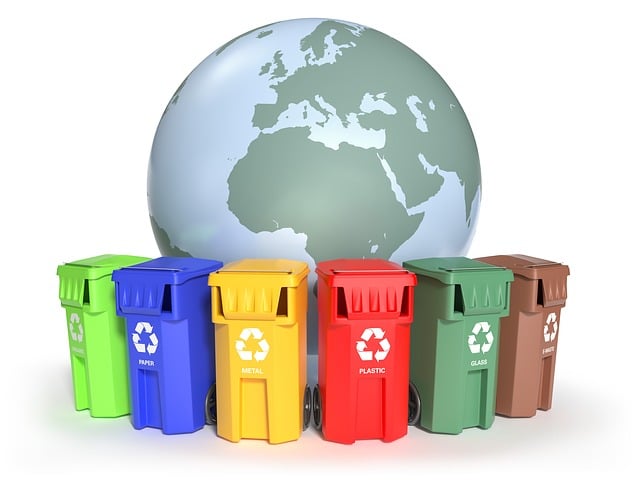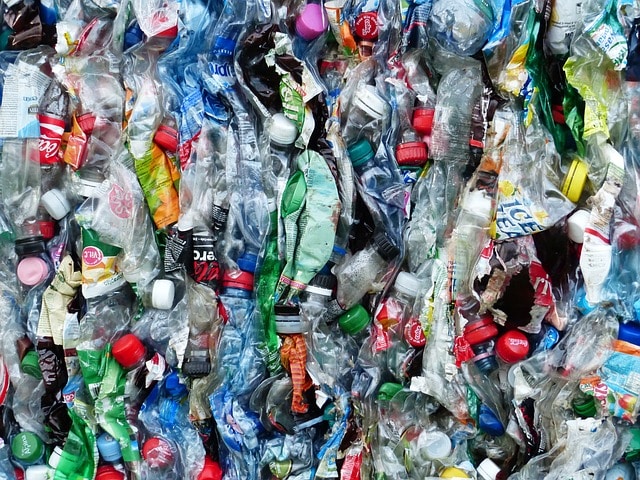How to be Green If You Reduce, Reuse, Recycle?
When it comes to Environmentalism, the first thing that everyone latches on to is recycling. We all hope and want to project an image of being green to our peers. The last thing we want, is to be accused of “greenwashing.”
I always prefer to look at any issue positively. I feel that it’s important for us to embrace and talk about the small actions that people can take to be more eco-friendly. However, it’s tiring to constantly hear people say, “I recycle, I love the environment.” To many people, it’s as if recycling is the only thing that matters.

Recycling is important, and a great thing for people to do. However, if we are being sincere about Sustainability every practical idea needs to be considered. Our efforts can’t start and stop at recycling.
How Can You be Green If All You do is Recycle?
Recycling has been vigorously adopted. But, whatever happened to the two other words in the phrase “Reduce, Reuse, Recycle?” Why is it that we seem to have largely forgtten the first two like they don’t even matter. It’s not our fault. Why has this been drilled into us since we were kids? There’s only one reason that this has happened.
It’s all about making money. If you’re a business which of these words would help you sell more products?
- Reduce
- Reuse
- Recycle
If you picked Recycle, you’re right. If your goal is to make a lot of money and encourage consumption, what would work better for you than recycling?
Recycling is green and good for the planet. Recycling doesn’t stand in the way of selling. In fact, recycling has been proven to increase consumption.
All we need to do is examine the explosive growth in the use of single use plastic soda bottles to prove the point. Consumers chose convenience over the environment. If it were not for the cover provided by recycling, re-usable drink containers might still be universally used. And we’d still be paying deposits for our re-usable containers.
When the public began accepting disposable containers the conversation changed. It was only after the acceptance of disposable containers that recycling became necessary.
Recycling gives us a really good feeling. Recycling makes us happy. It’s as if we are getting a sugar-high about recycling while glazing over the fact that we should first reduce and reuse.
Recycling is a Business, Not a Charity
People never consider Reduce or Reuse when buying something. This is because we never think about a products life span. Most people just think, “I like it, I’ll get it,” never considering where that product comes from or how it was made.
There seems to be a lot of faith in recycling without recognizing the fact that recycling has a lot of issues. After all, recycling is not a charity, it’s a business. For something to be recycled there must be a demand in the market for that product.
Often with many items viewed as recyclable, especially plastic, it’s cheaper to use virgin materials than it is to use recycled materials.
What is Recycling’s Future?
Getting a good view of the future is a great way to encourage positive change. Imagining our future helps others see what we may be facing, and what actions we should take.
Is Single Stream or Multi Stream Recycling Better?
In the US many of us have single stream recycling. This means that all of our recycling into one bin, because it’s supposed to make it easier. Some claim that this leads to contamination and makes recycling more difficult. There are recycling programs that use different bins for different types of materials. Here in the US, this is more commonly seen in a commercial setting.
Many people don’t understand what is and isn’t recycleable. A lot of wishcycling happens. People will sometimes put something in their recycling bin HOPING that it will be recycled.
When you put something in the recycle bin WISHING for it to be recycled, you do more harm than good. Recycling is a business! When incorrect materials arrive this can clog the machines used to sort materials by their type.
Contamination can create contaminated bales of recyclables that no one will purchase. A single rogue contaminated recyclable can send the entire bale to the landfill.
The best way to avoid this is to be informed about what and how your waste hauler accepts in your recycling bin. I know from personal experience that my city does not any item for recycling that has it’s original cap still attached. We have one bin for paper, another bin for everything else.

Some propose switching to a multi-stream recycling system thinking that would keep contaminants out of the recycling stream. Would this actually help? There are those that propose that if you had multiple bins, each for only specific items it would remove a lot of the guess work.
It might be true that if you had individual bins that were labeled for plastic, metal cans, glass bottles, and paper that contamination might be reduced. The likely chance of throwing in a bowling ball or hose is a lot less likely since each bin is so clearly labeled.
However it could have a negative impact on recycling. Would people haul four bins to the curb? Would doing this actually make recycling more efficient? Would contaminants still find there way into the bins?
I am sure about one thing, multiple bins would only complicate and hamper the pick up process. Multiple bins would slow the process, without eliminating the possibility of contamination. It is most certainly easier, quicker, and cheaper to do the sorting at a dedicated recycling center.
Sustainability Should Embrace Reduce and Reuse
Perhaps there is a better and more efficient choice than Recycling for our waste problem. Choosing to Reduce and Reuse, which has seemingly morphed into what is now known as the Circular Economy.
The Circular Economy is aimed at eliminating waste and reducing the continual use of new resources. Circularity also embraces repairing, refurbishing, remanufacturing and recycling to minimise the use of resources.
The circular economy also expects us to keep products, equipment and infrastructure in use longer. Doing this improves the productivity of these resources. All waste produced should become the ‘food’ for another process.
The regenerative approach of the circular economy stands in stark contrast to the traditional linear economy, which has a ‘take, make, dispose’ model of production.

Circular economy proponents also suggest that a sustainable world should not cause consumers to suffer a drop in the quality of their lives. They also claim that it can be achieved without loss of revenue or extra costs for manufacturers. Their argument is that circular business models can be as profitable as linear models, allowing us to keep enjoying similar products and services.
Naturally, it would appear that a circular economy would be more sustainable than our current linear economic model. By reducing the resources used, and the waste created, the circular economy conserves resources. Conserving resources would help to reduce environmental pollution.
Some argue that these assumptions are simplistic. That they disregard the complexity of our existing systems and over compensate for their potential trade-offs.
How do you feel about the concept of circular economy? Do you think that a circular economy will be more sustainable than our linear economy?
Calculate Your Carbon Footprint
If you would like to calculate your Carbon Footprint, follow the link to the free carbon footprint calculator of the United States Environmental Protection Agency.








